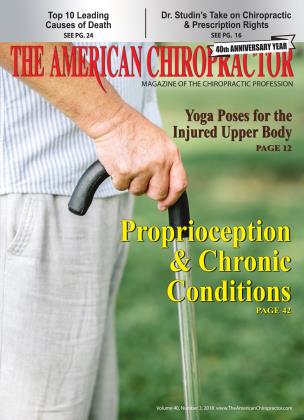Muscle Pain: Fibromyalgia or Muscle Repair Needs?
NUTRITION
Doug Grant
The human body is an intricately connected system of bones, muscles, ligaments, joints, tendons, and more. This intricacy makes it strong yet prone to developing problems, including fibromyalgia. Fibromyalgia is a condition that is estimated to affect 2 to 8% of the population,3 with women being affected about twice as often as men. The term “fibromyalgia” can be broken down into three parts: fibro, meaning “fibrous tissues”; myo the Greek word for “muscle”; and algos is the root word for “pain.” The term literally means “muscle and fibrous connective tissue pain.”12 Coincidentally, treating fibromyalgia needs to have a three-prong approach:
1. Eliminate the source of toxins (food or environmental) that cause pain.
2. Help the body eliminate the pain-inducing, damaged connective tissue proteins by digesting them out and improving circulation to get rid of them.
3. Add back the nutrients the muscle needs to stay anabolic, functioning, and healthy.
Working with thousands of athletes over the years has made it possible to see muscles working overtime, as well as what happens during those times and then into retirement. Fibromyalgia symptoms creep in at times during performance, but they are usually taken care of quickly with the correct ergogenic muscle nutrients. When fibrous muscle pain starts during retirement (sometimes as early as the thirties for some athletes), we have found that there is a need for cleansing the damaged muscle tissue for improved circulation to get the body to respond.
To eliminate the source of toxins, we need to focus the hardest on digesting proteins and eliminating the most acidic foods from our diets. Non-grass fed red meat from cows and “the other white meat” from pigs seem to be the largest causes of acid, especially when combined with carbonated beverages and other highly processed foods. Eliminating acidic foods is important. If the patient is going to continue to eat red meat, make sure it is as low in acid as possible or involves very little processing. Sodas must go, though.
Removing damaged connective tissue protein and increasing circulation should be done holistically with a combination of protease and peptidase enzymes that will break down the damaged tissue. Arginine and citrulline amino acids boost nitric oxide levels for increased blood flow and blood vessel expansion, which allows your body to better flush out the debris causing chronic pain.
Arginine and citrulline amino acids boost nitric oxide levels for increased blood flow and blood vessel expansion, which allows your body to better flush out the debris causing chronic pain.JJ
Adding back nutrients that muscles need to remain anabolic should be done with ergogenic muscle nutrients used during stress (exercise, mental stress, or disease). These are often the most overlooked but very important. Creatine, the sports nutrient, is actually one of the best methyl donor nutrients in existence. This is important for muscle volume and energy production in the muscle. BCAAs (branched chain amino acids) leucine, isoleucine, and valine are used during stress and help with muscle endurance. Glutamine is the most abundant amino acid and is most used during disease states and trauma. It is very important to add this nutrient back to keep issues from returning. Magnesium, chromium, and others have been shown to be beneficial as well.
Glutamine is the most abundant amino acid and is most used during disease states and trauma. J J
Getting Your Patients to Start Thinking About Muscle Nutrition
While it’s great for you and your patients to know this information, that’s a lot to learn and a bit of a mouthful, so let’s simplify it.
If your patient has muscle pain that might be fibromyalgia, eliminate acidic proteins and foods from the diet while introducing therapeutic enzymes to get rid of the debris. At the same time, increase blood flow with nitric oxide-increasing nutrients and make sure the muscles have the ergogenic and anabolic nutrients they need to thrive and be strong.
References:
1. Clainv, DanielJ. (16April2014). “Fibromyalgia”. JAMA. 311 (15): 1547-55. doi: 10.1001/jama.2014.3266. PMID 24737367.
2. Fibromyalgia”. NIAMS. July 2014. Archived from the original on 15 March 2016. Retrieved 15 March 2016.
3. Sommer C, Hauser W, Burgmer M, Engelhardt R, Gerhold K, Petzke F, Schmidt-Wilcke T, Spath M, Tolle T, Uceyler N, Wang H, Winkelmann A, Thieme K (June 2012). “[Etiology and pathophvsiology of fibromyalgia syndrome]”. Schmerz. 26(3): 259-67. doi: 10.1007/s00482-012-1174-0. PMID 22760458.
^ I Douglas Grant has been a team nutritionist for many I je NBA teams and professional athletes for more than 20 Ml yearsowns Optimal Health Systems, formulating and working with thousands of doctors around the M world on health programs and therapeutic whole food products to help with disease and bring back optimal health. He holds a patent on muscle building and repairing form ulas that are widely used around the globe. Contact OHS for more information at 800-890-4547.
 View Full Issue
View Full Issue






